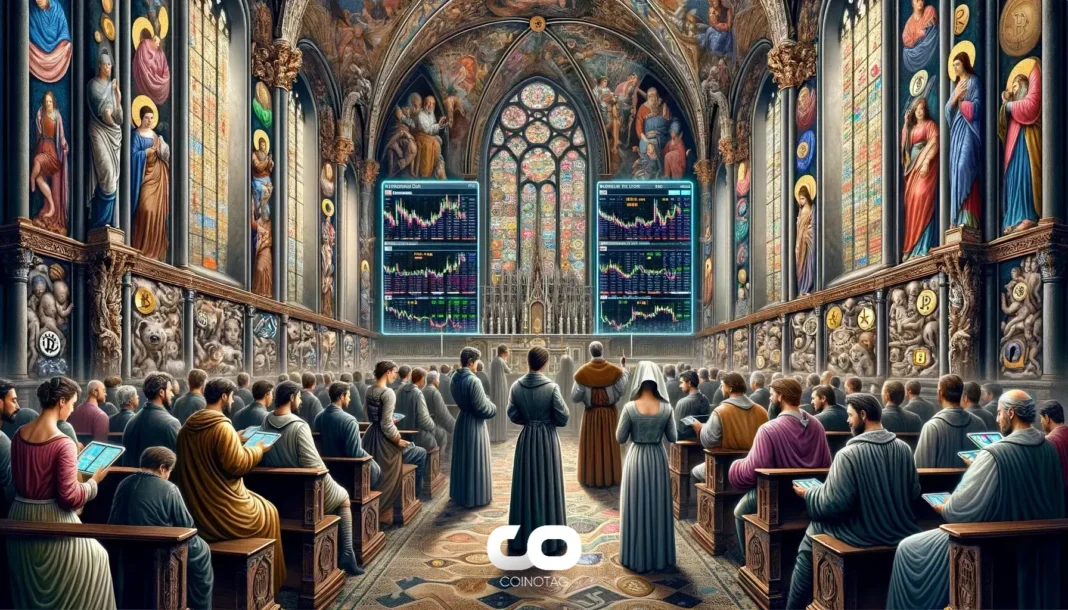| COINOTAG recommends • Exchange signup |
| 💹 Trade with pro tools |
| Fast execution, robust charts, clean risk controls. |
| 👉 Open account → |
| COINOTAG recommends • Exchange signup |
| 🚀 Smooth orders, clear control |
| Advanced order types and market depth in one view. |
| 👉 Create account → |
| COINOTAG recommends • Exchange signup |
| 📈 Clarity in volatile markets |
| Plan entries & exits, manage positions with discipline. |
| 👉 Sign up → |
| COINOTAG recommends • Exchange signup |
| ⚡ Speed, depth, reliability |
| Execute confidently when timing matters. |
| 👉 Open account → |
| COINOTAG recommends • Exchange signup |
| 🧭 A focused workflow for traders |
| Alerts, watchlists, and a repeatable process. |
| 👉 Get started → |
| COINOTAG recommends • Exchange signup |
| ✅ Data‑driven decisions |
| Focus on process—not noise. |
| 👉 Sign up → |
- In a landmark decision, FTX, a bankrupt crypto exchange, has announced plans to repay all its creditors and customers, including interest. However, the proposed distribution plan has not been well received by all.
- FTX creditor representative, Sunil Kavuri, has opposed the plan, advocating for debts to be settled in cryptocurrency rather than their dollar equivalent at the time of bankruptcy.
- Kavuri has also alleged that Sullivan and Cromwell, the debtors, have caused substantial damage to FTX creditors, estimated to exceed $10 billion.
FTX, a bankrupt crypto exchange, plans to repay its creditors and customers. However, the proposed distribution plan has been met with opposition from FTX creditor representative, Sunil Kavuri, who advocates for debts to be settled in cryptocurrency.
FTX’s Proposed Compensation Plan
In a recent document, FTX disclosed its proposed distribution plan, which includes repaying all its creditors and customers with interest. This move has been appreciated by many in the crypto community. However, Sunil Kavuri, the FTX creditor representative, has opposed the plan. He believes that debts should be settled in cryptocurrency rather than their dollar equivalent at the time of bankruptcy.
Opposition from FTX Creditor Representative
Sunil Kavuri has urged stakeholders to vote against the proposed plan. He has highlighted several critical concerns, including the fact that Sullivan and Cromwell, the debtors, are indebted to FTX customers for the current value of their holdings, which is 3-10x the petition prices. Kavuri has also alleged that Sullivan and Cromwell have caused over $10 billion loss to creditors.
FTX’s Bankruptcy and the Crypto Market Rally
FTX filed for bankruptcy in November 2022, during the peak of the crypto winter. However, in 2023, the crypto market bounced back significantly, and so did the value of cryptocurrencies held by the exchange. FTX now plans to allocate the additional billions in cash reserves towards paying interest to its 2 million customers. This is a relatively uncommon outcome compared to typical bankruptcy settlements where creditors often receive minimal compensation.
| COINOTAG recommends • Professional traders group |
| 💎 Join a professional trading community |
| Work with senior traders, research‑backed setups, and risk‑first frameworks. |
| 👉 Join the group → |
| COINOTAG recommends • Professional traders group |
| 📊 Transparent performance, real process |
| Spot strategies with documented months of triple‑digit runs during strong trends; futures plans use defined R:R and sizing. |
| 👉 Get access → |
| COINOTAG recommends • Professional traders group |
| 🧭 Research → Plan → Execute |
| Daily levels, watchlists, and post‑trade reviews to build consistency. |
| 👉 Join now → |
| COINOTAG recommends • Professional traders group |
| 🛡️ Risk comes first |
| Sizing methods, invalidation rules, and R‑multiples baked into every plan. |
| 👉 Start today → |
| COINOTAG recommends • Professional traders group |
| 🧠 Learn the “why” behind each trade |
| Live breakdowns, playbooks, and framework‑first education. |
| 👉 Join the group → |
| COINOTAG recommends • Professional traders group |
| 🚀 Insider • APEX • INNER CIRCLE |
| Choose the depth you need—tools, coaching, and member rooms. |
| 👉 Explore tiers → |
Conclusion
The situation surrounding FTX’s bankruptcy and proposed distribution plan continues to develop. While the plan to repay all creditors and customers has been appreciated by many, it has also faced opposition. The final outcome will depend on the decisions made by stakeholders and the future performance of the crypto market.
| COINOTAG recommends • Members‑only research |
| 📌 Curated setups, clearly explained |
| Entry, invalidation, targets, and R:R defined before execution. |
| 👉 Get access → |
| COINOTAG recommends • Members‑only research |
| 🧠 Data‑led decision making |
| Technical + flow + context synthesized into actionable plans. |
| 👉 Join now → |
| COINOTAG recommends • Members‑only research |
| 🧱 Consistency over hype |
| Repeatable rules, realistic expectations, and a calmer mindset. |
| 👉 Get access → |
| COINOTAG recommends • Members‑only research |
| 🕒 Patience is an edge |
| Wait for confirmation and manage risk with checklists. |
| 👉 Join now → |
| COINOTAG recommends • Members‑only research |
| 💼 Professional mentorship |
| Guidance from seasoned traders and structured feedback loops. |
| 👉 Get access → |
| COINOTAG recommends • Members‑only research |
| 🧮 Track • Review • Improve |
| Documented PnL tracking and post‑mortems to accelerate learning. |
| 👉 Join now → |







